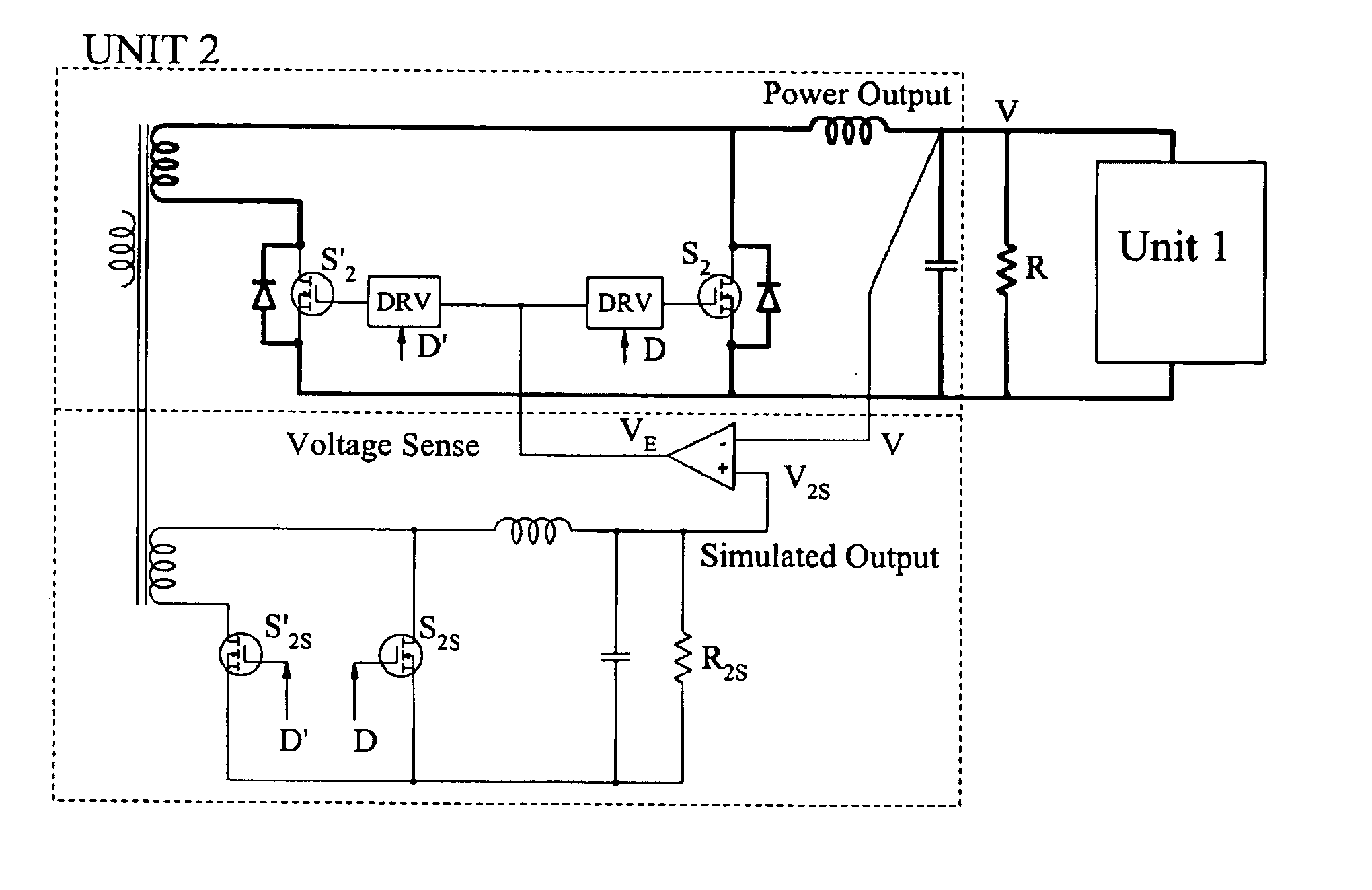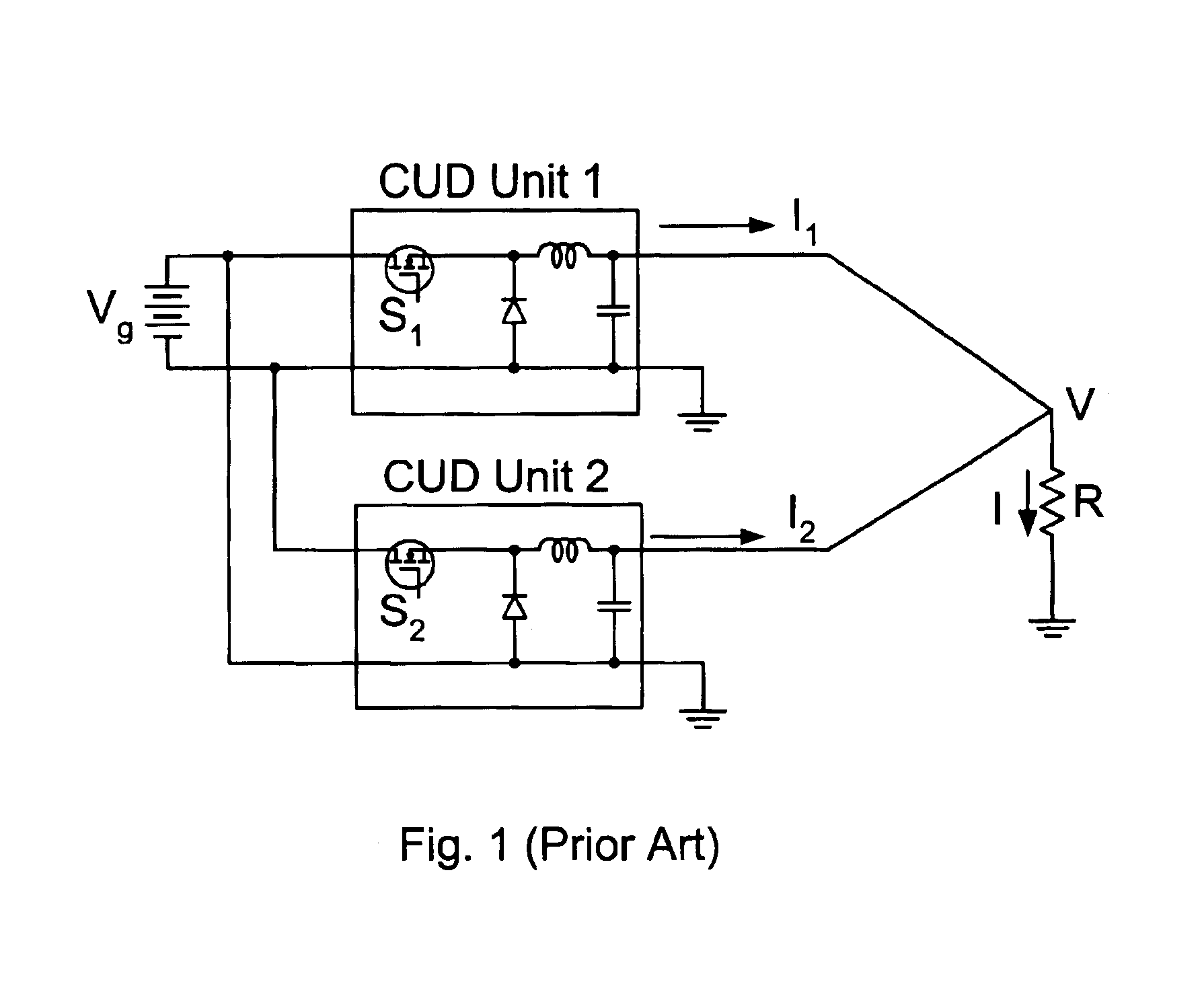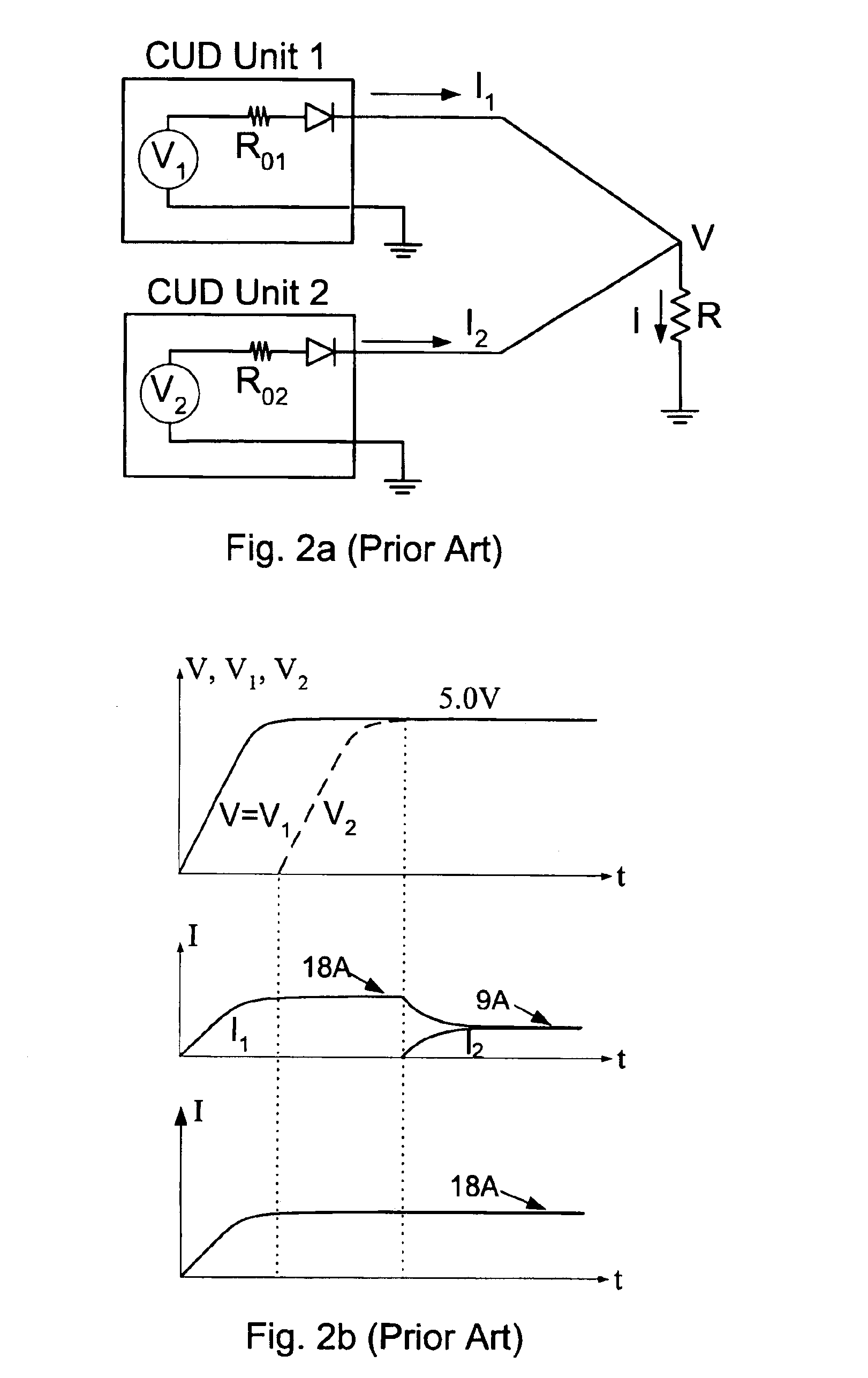Voltage sense method and circuit which alleviate reverse current flow of current bi-directional converters
a current bi-directional converter and voltage sense technology, applied in the direction of electric variable regulation, process and machine control, instruments, etc., can solve the problems of cbs switch destruction, additional problems, and excessive current stress
- Summary
- Abstract
- Description
- Claims
- Application Information
AI Technical Summary
Benefits of technology
Problems solved by technology
Method used
Image
Examples
first embodiment
Although the internal Thevenin voltage source V2 is not directly accessible for measurement during the start-up of Unit 2, the same voltage can be indirectly measured by simulating this voltage with a simulated signal output V2S as shown in FIG. 16. The simulated output is created by use of an additional winding on the main transformer and a pair of small signal MOSFET devices S2S and S′2S to create with an additional small inductor and capacitor the auxiliary output V2S. Two signal MOSFET devices are operated out of phase and with the same duty ratios D and D′ as power output synchronous rectifier devices. However, unlike the power output devices which are disabled initially, the two signal MOSFET devices are always enabled as soon as primary devices are enabled. It is called simulated output since it simulates the time variation of the actual power output V2D if the power output were operated during start-up with its synchronous rectifiers enabled. The main power output is shown i...
second embodiment
The additional simulated output circuitry can be further simplified by connecting the outputs of the simulated output circuit and main power output together and therefore sense the differential voltage sense signal (V-V2) with reference to the main power output return lead, as shown in FIG. 20. This circuit still has additional complexity due to presence of extra transformer secondary winding and additional output inductor winding of the simulated output. Both, however, can be eliminated in a third embodiment of the present invention.
third embodiment
The two transformer secondary windings can be combined into single winding with the two signal processing MOSFET switches S2S and S′2S connected directly to the secondary winding of the main transformer providing power output. The output inductor of the simulated output can also be eliminated and the desired differential voltage sense signal (V-V2) sensed on the output capacitor CF of the simulated output with reference to the output voltage return (output ground). The two resistors are added in the drain lead of each auxiliary MOSFET to act as a low-pass filters to filter out the AC ripple, the role previously played by output inductor of simulated output. This third embodiment is one of the best modes to practice this invention since it implements the method of the present invention with a very simple signal processing circuit and without complicated additional magnetics windings and magnetics components, such as output inductor of simulated output.
This simple signal processing ci...
PUM
 Login to View More
Login to View More Abstract
Description
Claims
Application Information
 Login to View More
Login to View More - R&D
- Intellectual Property
- Life Sciences
- Materials
- Tech Scout
- Unparalleled Data Quality
- Higher Quality Content
- 60% Fewer Hallucinations
Browse by: Latest US Patents, China's latest patents, Technical Efficacy Thesaurus, Application Domain, Technology Topic, Popular Technical Reports.
© 2025 PatSnap. All rights reserved.Legal|Privacy policy|Modern Slavery Act Transparency Statement|Sitemap|About US| Contact US: help@patsnap.com



